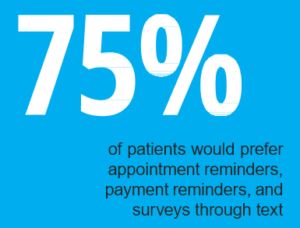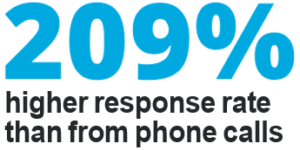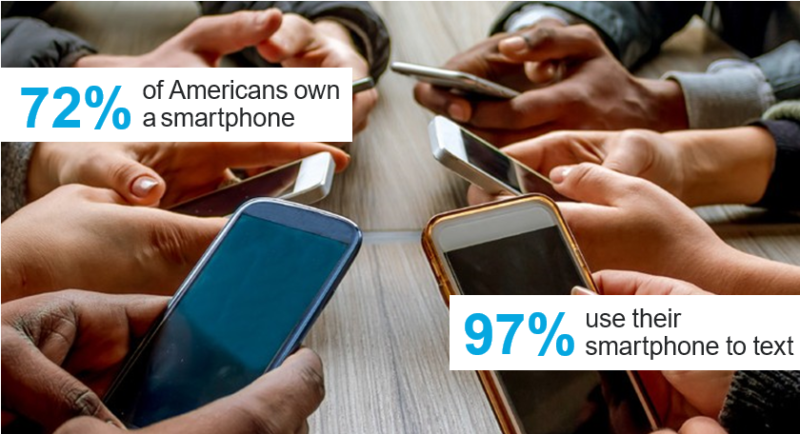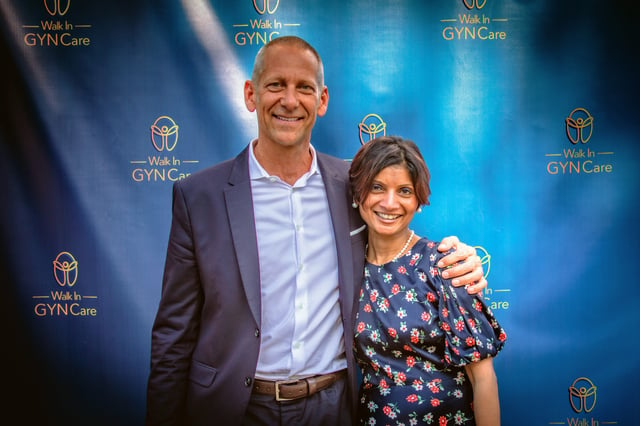SOME FACTS ABOUT TEXTING THAT WILL CHANGE THE WAY YOU ENGAGE PATIENTS
By SolutionReach
Texting is everywhere. It’s the most widely used feature on a smartphone, and if you look around you won’t find that hard to believe. Cell phones and texting have become an inherent part of our society. People carry their phones with them wherever they go and are constantly checking and responding to messages.
So what does that mean to you? It means that texting presents an opportunity for you to communicate with your patients. A way to reach them anytime, without seeming like you’re intruding in their day-to-day activities.
But let’s let the numbers prove it. We’ve done the research, and we found some stats that explain why your practice should be texting your patients.
You shouldn’t always do something just because everyone else is, but in this case, it’s a totally valid reason. Almost every American is using their phone to text, so why not connect with your patients in a way they already prefer? Texting is an easy way to communicate with nearly all of your patients.

Texting your patients takes less time than a phone call. A lot less.Although two minutes per phone call may not seem very long, the time adds up when you calculate how many phone calls your practice makes every day. With a text, you can quickly give a patient the information they need, and then continue with other office tasks until you receive a response. Nobody will need to be tied to a phone, waiting on hold while details are worked out. That’s old school.

Quick math tells us that texts are almost 5 times more likely to be read. Don’t waste time typing out and formatting an email just to have it sit unopened in an inbox. Sending a message through text almost guarantees that it will be read. Plus, text messages are shorter than emails, so they take less time to write, and there’s no formatting to a text message.
Use your time more efficiently and send a message with the greatest chance of connecting with the intended recipient.

There’s that ominous word – “ever”. That means anytime you don’t connect with a patient on a call and leave crucial information in a voice message, there’s a good chance it won’t get heard. Ever. Not only does making a phone call and leaving a voicemail take much longer than sending a text message, there is a far better chance your patient will receive the information they need if it is sent through a text.
 Here’s the proof that texting is preferred in healthcare. But what should you text?
Here’s the proof that texting is preferred in healthcare. But what should you text?
People don’t usually mean to forget about their appointments or to pay their bill, it just happens sometimes. This is why your practice is probably already giving your patients reminders of these things. However, most of your patients would prefer to get these reminder messages as texts, rather than as emails or phone calls.13

Not only do patients prefer to hear from you via text, they are far more likely to respond to you this way. This makes sense. After all, texting is quicker and more convenient than phone calls and emails, so it’s easy for your patients to reply to a text message you send.







